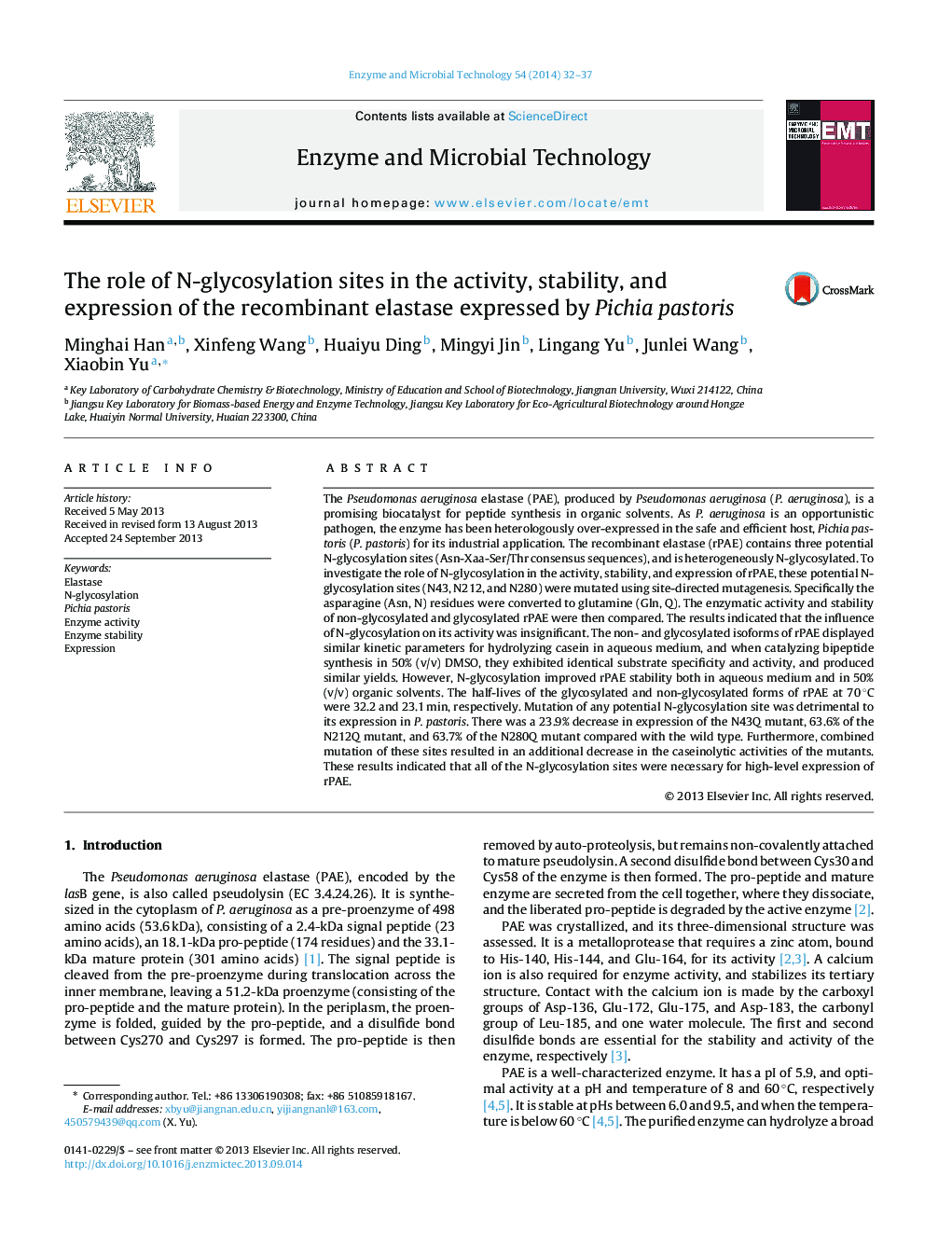| Article ID | Journal | Published Year | Pages | File Type |
|---|---|---|---|---|
| 6488298 | Enzyme and Microbial Technology | 2014 | 6 Pages |
Abstract
The Pseudomonas aeruginosa elastase (PAE), produced by Pseudomonas aeruginosa (P. aeruginosa), is a promising biocatalyst for peptide synthesis in organic solvents. As P. aeruginosa is an opportunistic pathogen, the enzyme has been heterologously over-expressed in the safe and efficient host, Pichia pastoris (P. pastoris) for its industrial application. The recombinant elastase (rPAE) contains three potential N-glycosylation sites (Asn-Xaa-Ser/Thr consensus sequences), and is heterogeneously N-glycosylated. To investigate the role of N-glycosylation in the activity, stability, and expression of rPAE, these potential N-glycosylation sites (N43, N212, and N280) were mutated using site-directed mutagenesis. Specifically the asparagine (Asn, N) residues were converted to glutamine (Gln, Q). The enzymatic activity and stability of non-glycosylated and glycosylated rPAE were then compared. The results indicated that the influence of N-glycosylation on its activity was insignificant. The non- and glycosylated isoforms of rPAE displayed similar kinetic parameters for hydrolyzing casein in aqueous medium, and when catalyzing bipeptide synthesis in 50% (v/v) DMSO, they exhibited identical substrate specificity and activity, and produced similar yields. However, N-glycosylation improved rPAE stability both in aqueous medium and in 50% (v/v) organic solvents. The half-lives of the glycosylated and non-glycosylated forms of rPAE at 70 °C were 32.2 and 23.1 min, respectively. Mutation of any potential N-glycosylation site was detrimental to its expression in P. pastoris. There was a 23.9% decrease in expression of the N43Q mutant, 63.6% of the N212Q mutant, and 63.7% of the N280Q mutant compared with the wild type. Furthermore, combined mutation of these sites resulted in an additional decrease in the caseinolytic activities of the mutants. These results indicated that all of the N-glycosylation sites were necessary for high-level expression of rPAE.
Related Topics
Physical Sciences and Engineering
Chemical Engineering
Bioengineering
Authors
Minghai Han, Xinfeng Wang, Huaiyu Ding, Mingyi Jin, Lingang Yu, Junlei Wang, Xiaobin Yu,
